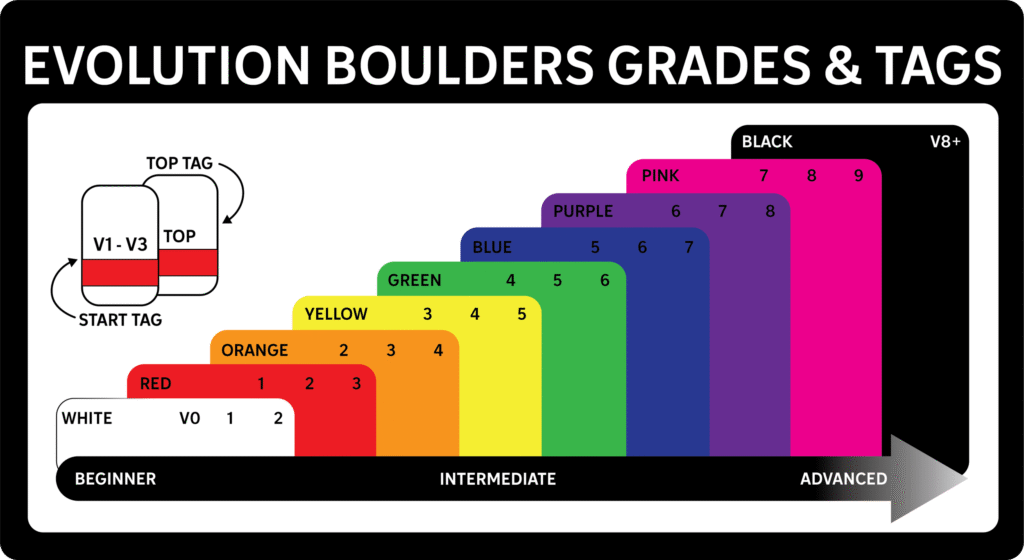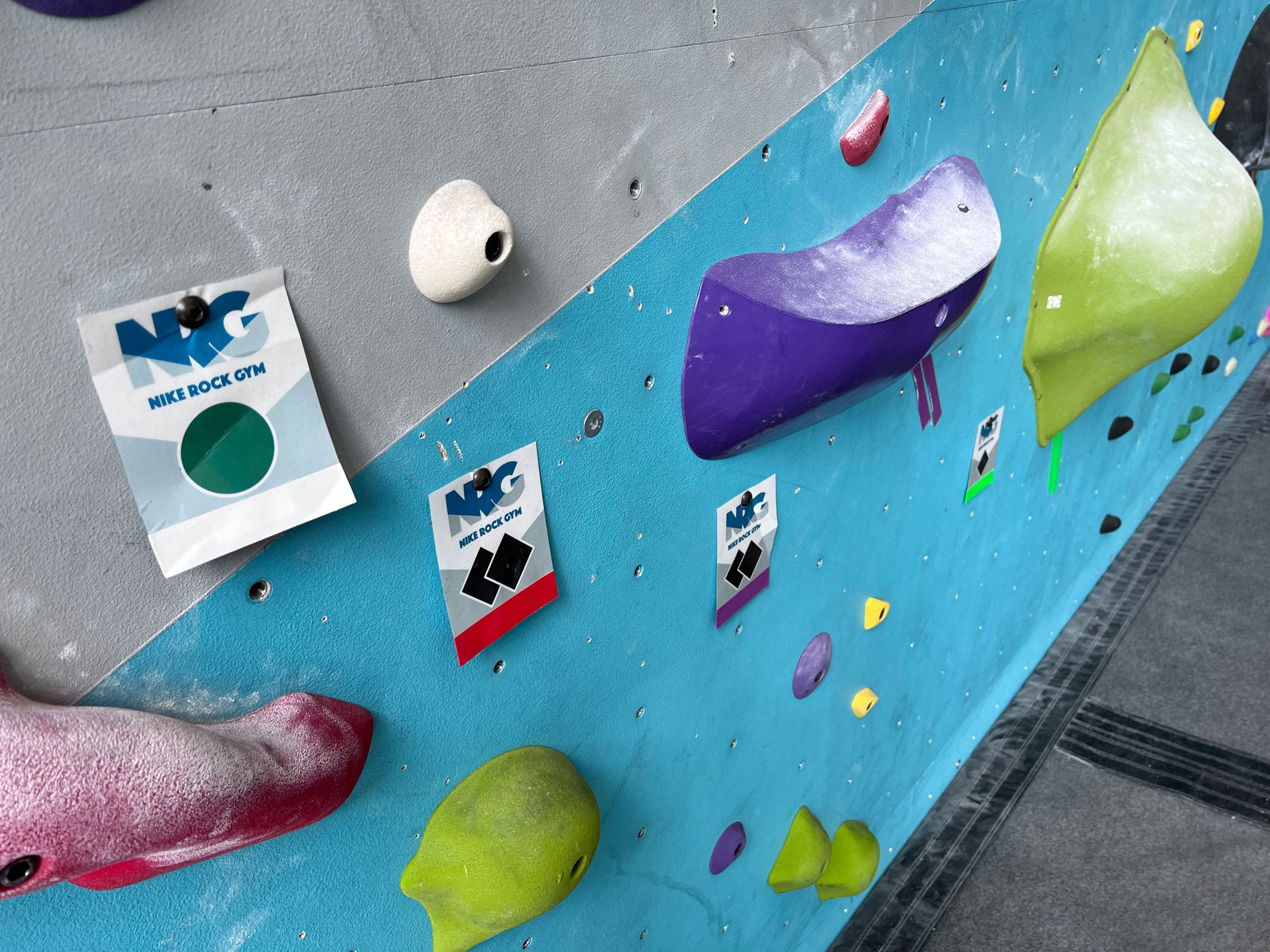WHAT IS CIRCUIT GRADING?
Circuit Grading is a way of categorizing bouldering problems into groups of similar difficulty. It combines the commonly used “Vermin” or “V” system (which uses a number along the scale of V0-VX) with a color system to represent a group of grades along a spectrum. One end of that spectrum has beginner-friendly climbs and the other reaches into expert levels.
We decided to use Circuit Grading very intentionally. In general, climbing is a very subjective sport. Every climber has their own strengths and areas for improvement. Because all bodies are different, every climber (and setter) is unique. Circuit Grading gives both climbers and setters flexibility to play with different types of climbs and gives better insight into where your skills are as a climber. Circuits encourage you to try climbs you may have ignored because the “number was too high,” which is a great way to level up your skills.

HOW DO I CHOOSE A CLIMB? WHERE DO I START AND HOW DO I KNOW WHEN TO STOP?
Each climb on the wall is marked with two tags and two pieces of tape. The “Start Tag” is secured to the starting hold and has a color indicating the circuit grade range. It also has the number range of V grades that the circuit color represents. The “Top Tag” will be attached to the finish hold, and has the same color indicator as the Start Tag. To make it as easy as possible to find the climbs you want, we also use the old industry standard of two pieces of tape on the start hold(s). The color of the tape indicates the circuit grade. Each long strip of tape represents where one of your hands should start. If both pieces of tape are on one hold you start with both hands on that hold. If the two pieces of tape are on two different holds, than you start with one hand on each


